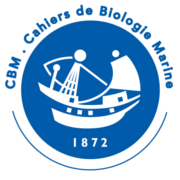Technical development and calibration of lipofuscin quantification for the potential use as an age estimate in snow crabs Chionoecetes opilio (Decapoda: Oregoniidae)
- Authors:
-
ALLAIN Renée,
MORIYASU Mikio,
CRAWFORD Bryan,
COURTENAY Simon
- Keywords:
-
snow crab;
chionoecetes opilio;
lipofuscin;
age estimation
- Abstract:
- This study demonstrated the presence of lipofuscin granules in the olfactory lobe cell mass (OLCM) of snow crab Chionoecetes opilio and examined whether granule quantification results are subject to methodological bias. Lipofuscin quantification in histological sections of the OLCM were compared between: 1) snow crab categories (sex and two indicators of age: size and condition of carapace (evaluated by the coloration of the carapace, presence/absence of scars and epizootic and epiphytic growth); 2) sample preparation methods; and 3) microscopic image collection parameters. No significant difference was observed in lipofuscin levels between mature males and females of similar size and carapace condition. Lipofuscin was more abundant in crabs with a decalcifying (presumably, older) carapace condition. However, larger clean-shell males did not have higher lipofuscin levels than smaller old-decalcifying-shell males. Autofluorescent intensity of granules was significantly higher in brain samples post-fixed in decalcifying solution compared to formalin fixed samples; however, lipofuscin levels did not differ. Increased exposure times to laser light of up to 120 seconds significantly decreased autofluorescent intensity of lipofuscin granules. No significant differences were observed in lipofuscin levels when varying optical section thickness or when comparing single confocal planes and stacks. Lipofuscin granule size frequency histograms showed possible image analysis limitations in terms of minimum lipofuscin granule size. These results raised concerns regarding the applicability of histological lipofuscin quantification in the OLCM of snow crabs.
- Résumé :
- Développement technologique et calibration de la quantification de la lipofuscine utilisée pour estimer l'âge du crabe des neiges Chionoecetes opilio (Decapoda: Oregonnidae). Cette étude a examiné la présence de granules de lipofuscine dans les masses cellulaires du lobe olfactif (MCLO) du crabe des neiges Chionoecetes opilio. Cette étude a également examiné la possibilité de biais méthodologiques quant aux résultats de quantification des granules de lipofuscine. Les concentrations de lipofuscine ont été comparées avec certains paramètres biologiques et techniques. Aucune différence significative n'a été observée dans les concentrations de lipofuscine entre les mâles et les femelles de même taille et condition de carapace. Les granules de lipofuscine étaient plus abondants chez les crabes avec une vieille carapace tandis que les plus gros crabes n'avaient pas les concentrations de lipofuscine les plus élevées. De plus, des différences significa204 LIPOFUSCIN qUANTIFICATION IN SNOW CRABS CHIONOECEtES OPIlIO Introduction The ability to accurately age crustaceans has proven challenging as the majority of these animals lack permanent hard structures from which age can be determined. Popular aging techniques used for snow crab Chionoecetes opilio (Fabricius, 1788), are based on size frequency histograms, which are often determined by measuring a large number of animals over a period of time, and laboratory growth studies which can be expensive and time consuming (Robichaud et al., 1989; Sainte-Marie et al., 1995; Comeau et al., 1998; Hébert et al., 2002). Additionally, when sampling is not feasible throughout the year, such as with certain temperate or polar species, individual cohorts may not be accurately represented. Laboratory growth studies offer a controlled environment and close monitoring of individuals; however, laboratory settings may not reflect the natural fluctuations of environmental factors that may affect growth such as water temperature, food availability and animal density. The quantification of lip

